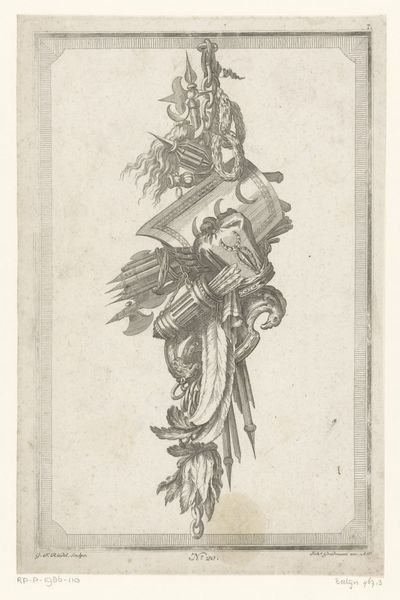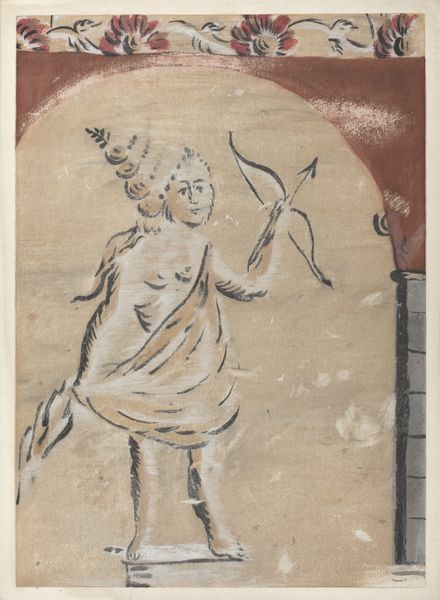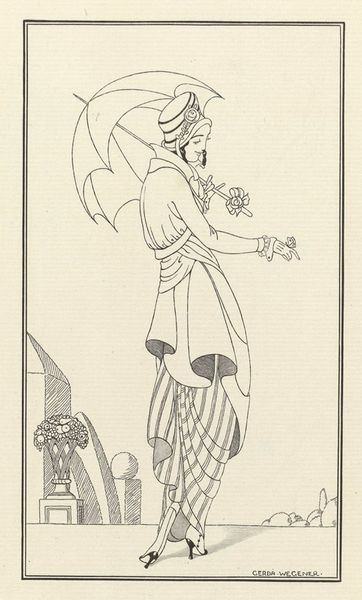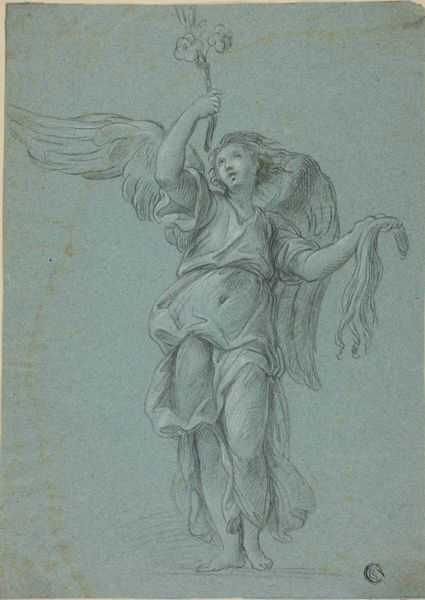
Genius med bue i venstre hånd og højre hånd hævet mod en kronet fugl 1843
0:00
0:00
drawing, print, woodcut, engraving
#
drawing
# print
#
figuration
#
woodcut
#
line
#
engraving
Dimensions: 128 mm (height) x 82 mm (width) (bladmaal)
Editor: We're looking at "Genius med bue i venstre hånd og højre hånd hævet mod en kronet fugl" from 1843, a drawing and print by Andreas Flinch. I'm really struck by the central figure - they appear almost as part of the decorative floral elements surrounding them. What’s your read on this interesting figure? Curator: Well, it is indeed an intriguing image. In the context of 19th-century Denmark, think about the prevailing artistic conventions and nationalistic aspirations. Figures like this, combining human and natural forms, were often employed to symbolize abstract concepts, like genius or inspiration. The presence of the crowned bird elevates this beyond mere decoration, inviting reflection on power and its relation to creative spirit. What could this interplay between the “genius” and the bird imply? Editor: Perhaps the bird represents divine right or patronage of the arts by royalty? And the figure seems trapped by the flowers almost, so does it mean that "genius" is limited by circumstances? Curator: That is certainly a good consideration. How might the figure's ambiguous gender identity, or lack thereof, fit into socio-cultural power structures of the era? Editor: Interesting. It certainly challenges the conventional understanding of gender roles within the artistic scene and broader society of the time. Curator: Indeed, and such ambiguity can be interpreted as a form of social critique. The image prompts us to examine the role of the artist and muse during this period, challenging normative ideas about their relationship to society. The location in the SMK – Statens Museum for Kunst also solidifies this image’s placement in the established artistic lineage and the cultural value it brings. Editor: I never considered the figure's gender that deeply. That really expands my perspective on the piece! Curator: Examining artwork through a historical and social lens helps expose complex power structures we may not have initially recognized. It allows the artwork to continue resonating and educating viewers centuries later.
Comments
No comments
Be the first to comment and join the conversation on the ultimate creative platform.













